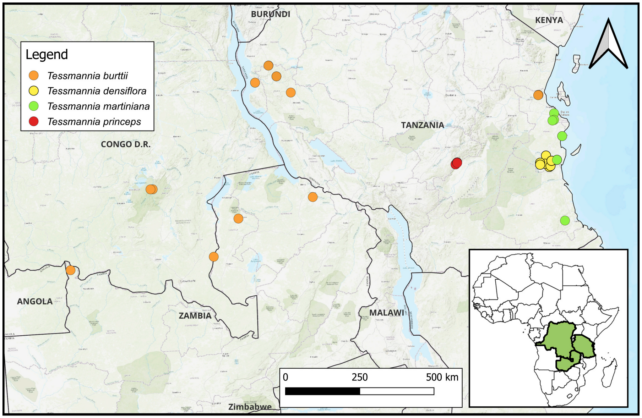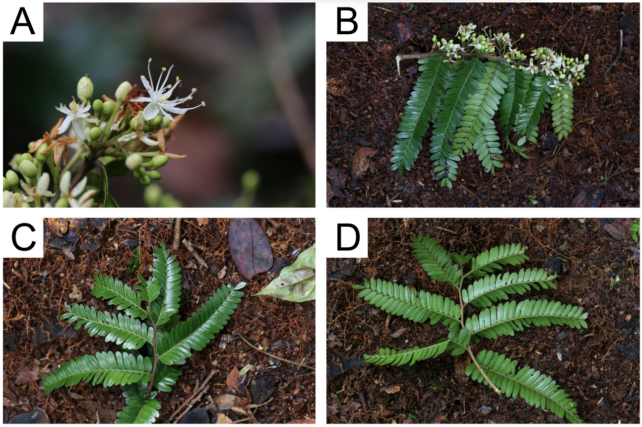[ad_1]
A species of old-growth tree that is totally new to science has been hiding out in a narrow slice of mountain rainforest in Tanzania. Scientists have named the canopy-piercing tree Tessmannia princeps, and they suspect it could live for as long as 3,000 years.
In 2019, botanist Andrea Bianchi and two local plant experts, Aloyce and Ruben Mwakisoma, were surveying the tropical rainforests in the Udzungwa mountains in south-central Tanzania when they suddenly encountered a 40-meter- (130-foot-) tall ‘unarmed’ stranger.
The monstrous tree in their path was unlike any that the group had seen before in their forest census. Its grayish, light-brown bark, towering root buttresses, brown-haired leaves, and sweetly scented flowers defied scientific categorization.

The newly described evergreen tree is now thought to belong to the Tessmannia genus, which includes about a dozen other species native to tropical Africa. Scientists say it is “readily distinguishable” from others in its genus because of its numerous leaflets.
A thorough survey in nearby rainforest patches turned up only 100 other mature individuals of the T. princeps species, the oldest of which may be well over 2,000 years old, based on the rings of its fallen comrades.
Further radiocarbon dating is needed to confirm that, but just eyeballing the trees, it’s pretty obvious they have been around for a long time. The root buttresses sometimes stretch as high as 15 meters, right up to the first branch in the canopy.
The trees are part of a critical ‘ecosystem bridge‘ that unites two 30-million-year-old forests in Tanzania.

This green corridor is home to a private company’s restoration project, which seeks to protect the remaining patches of forest from human influence while raising 5,500 villagers out of poverty. Without continued restoration work, Bianchi and his colleagues suspect the newly identified species would be “immediately threatened with habitat loss”.
The researchers estimate there are only about 1,000 T. princeps left, and they think the species is largely restricted to two adjacent valleys. A population exists in the Boma La Mzinga Village Land Forest Reserve and the Uluti Village Land Forest Reserve.
“The historical past of the area in which the tree is found, has likely had a major impact in the decline of the habitat of this species,” write the authors of the new species description.
“The vast majority of montane forests in the immediate vicinity have been deforested in the last 120 years.”

Old-growth trees like these ones provide a range of ecosystem services, including shade, carbon storage, and habitat for plants and animals. Yet they are some of the most threatened plants of our time.
Not only are the world’s forests shrinking, they are also getting younger, and that’s a big problem for forest conservation and climate science.
In 2018, the world lost nearly 4 million hectares of old growth rainforest, which is roughly the size of Belgium.
Tessmannia princeps is standing tall in the face of adversity. But who knows if it can be protected for another three millennia.
In 2023, scientists predicted that 75 percent of undescribed plant species were threatened with extinction. Based on current designations, T. princeps would meet the criteria to be listed as vulnerable. It’s one of the lucky ones.
The study was published in Phytotaxa.
[ad_2]
Source link




